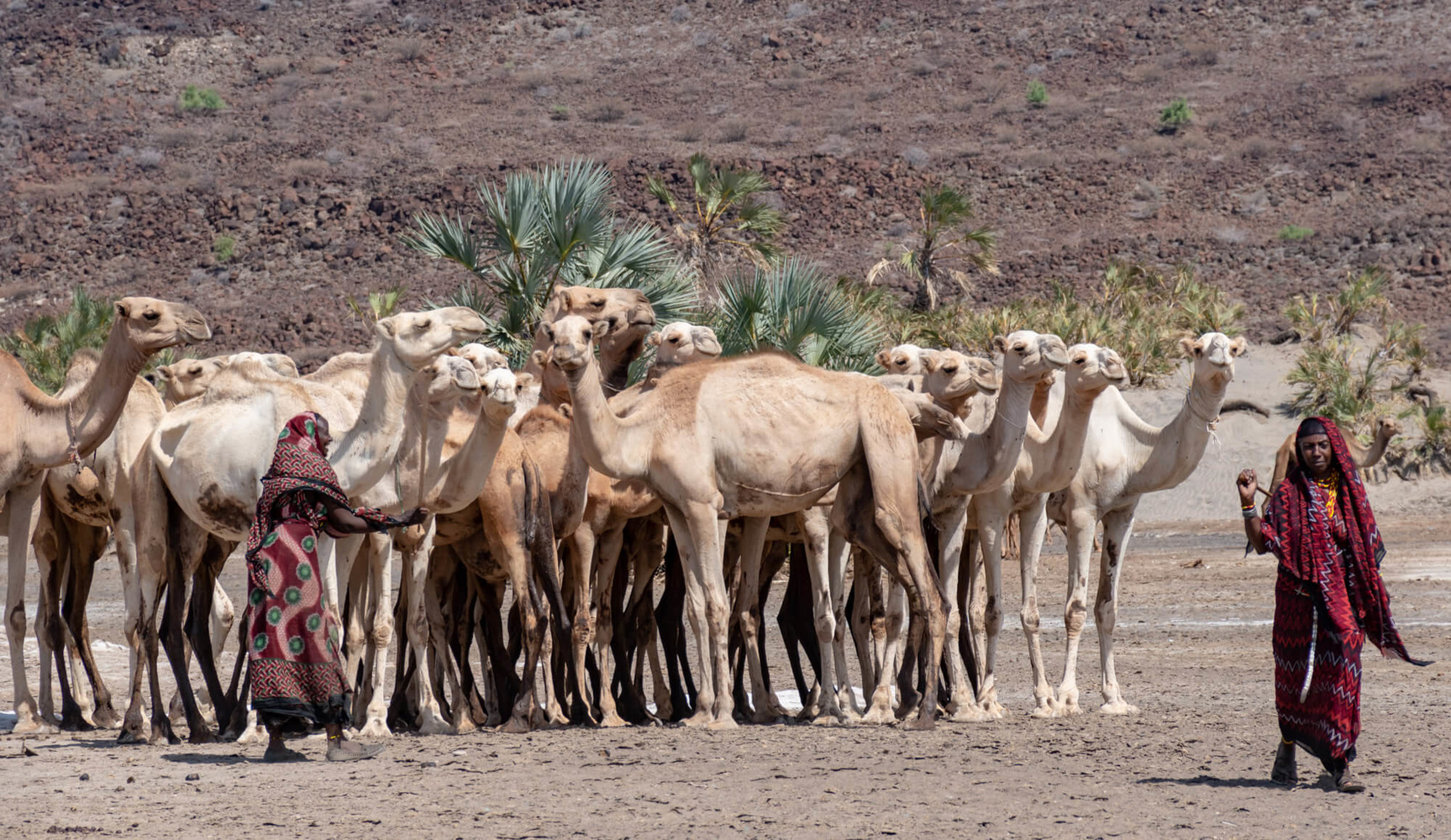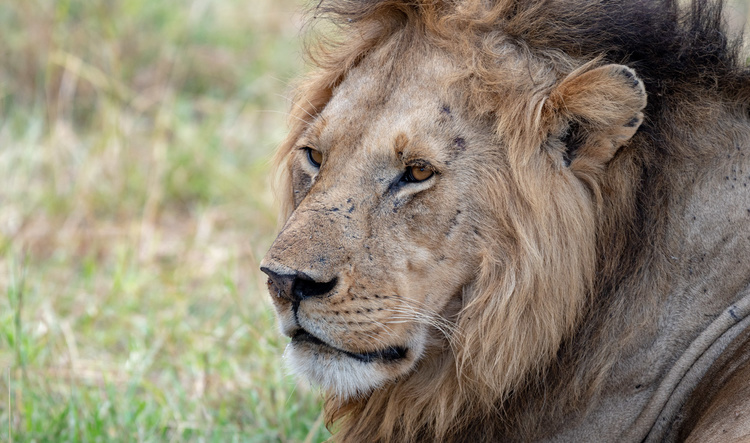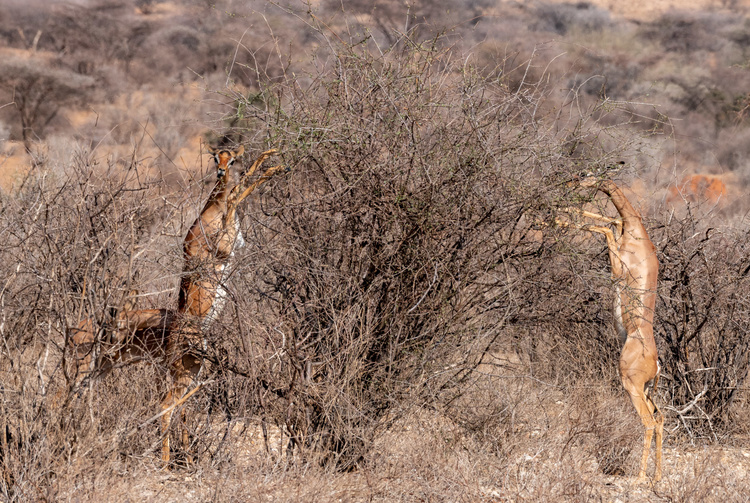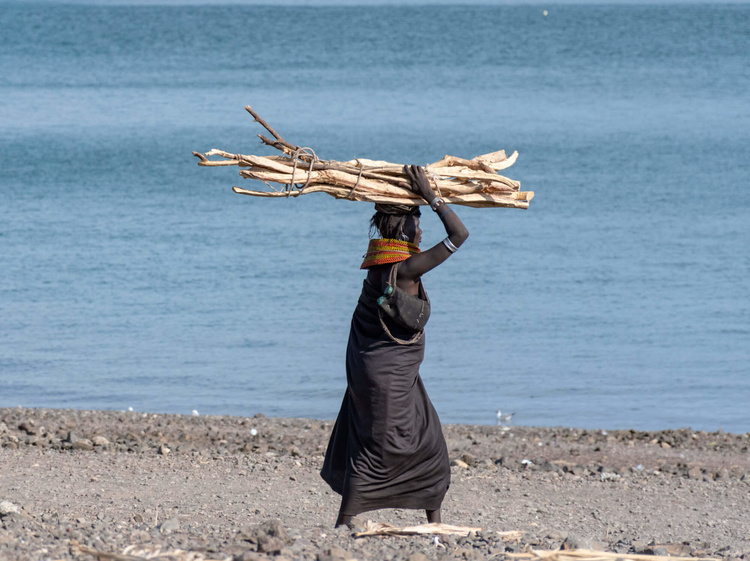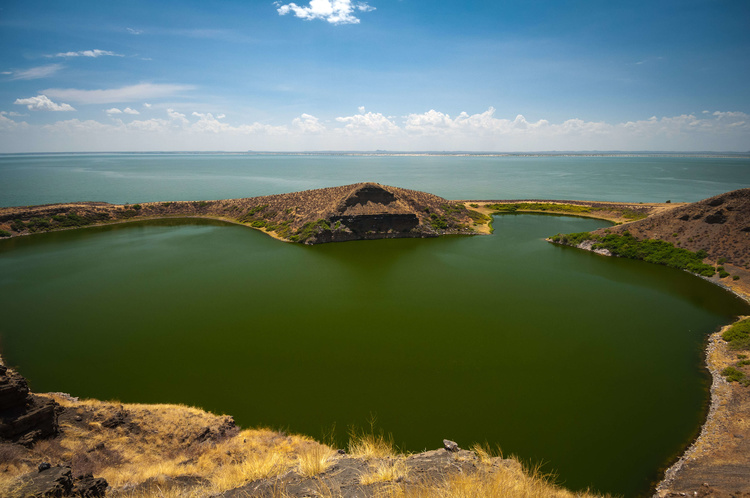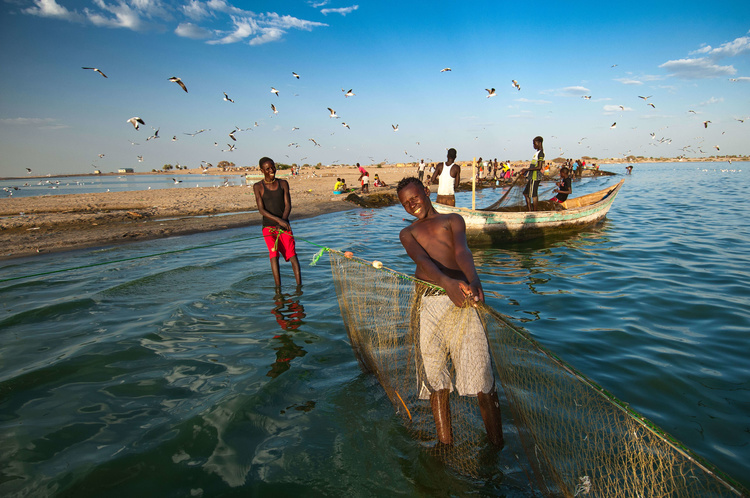Turkana Adventure
From US$5,756 per person
Itinerary
-
Day 1Nairobi - Shaba Game Reserves
Depart Nairobi and with packed lunch drive to Buffalo Springs & Samburu Game Reserves, game drive and thereafter check in at Shaba Sarova Lodge for dinner and overnight. Shaba National Reserve, famous as the land of "BORN FREE" which stems from the heritage of Joy and George Adamson, who nurtured Elsa the lioness on the grounds of Shaba in the 50's before setting the lioness free on the plains beyond.
-
Day 2Samburu - Marsabit NP
After breakfast, with packed lunch, drive northward to Marsabit National Park, a remote paradise for nature lovers, for game drive. This beautiful park is a refuge for huge tusked bull elephants, diverse birdlife, mammals and reptiles. Dinner and overnight at Jirime Hotel
-
Day 3Marsabit NP - Lake Turkana
After breakfast, with picnic lunch, drive through Karoli Desert and Chalbi Desert, to Loyangalani Settlement, on the south-east side of the lake.
On the road to Loyangalani lies the Chalbi desert and its mirages. Triangular shapes can be seen, which are nothing other than herds of camels guided by the Gabbra.
Arrival at the end of the day on the shores of Lake Turkana accompanied by the end-of-day lights. Overnight at Palm Shade Resort -
Day 4Lake Turkana - Loyangalani
Breakfast at leisure thereafter visit El Molo village, the museum, and, enjoy the sights and sounds of this famous settlement. This day will take you to Samburu, Turkana and Rendille villages or homesteads.
The world's largest desert lake, Lake Turkana is 250 km long and 60 km wide. Also known as the “Jade Sea”, it flows right up to the Ethiopian border. It has been a UNESCO World Heritage Site since 1997. Although the environment is dry and not very conducive to the development of vegetation, aquatic life is abundant. The Nile crocodile and the hippopotamus can be found here. The lake is fed by three rivers from Ethiopia. It is also the saltiest lake in Africa. The lake is drained by evaporation, which increases its salt content.
The undulating algae in its waters regularly change color, turning from gray to blue as the clouds pass overhead. On the surface, however, the lake is always bright green in the sunlight. -
Day 5Lake Turkana - Loyangalani - Sibiloi NP
After breakfast and with packed lunch, drive to Sibiloi NP. Late afternoon visit Petrified Forest, dinner and overnight at Alia Bay.
-
Day 6Sibiloi NP - Eliye Springs (Lake Turkana West)
Early breakfast and thereafter depart by vehicle, with packed lunch, to visit the Kobi Fora museum, the famous fossils excavation sites, fossils of a big-tusked behemoth of a predecessor of today’s Elephant, giant tortoise and fish sites. Late afternoon boat to Central Island (UNESCO – world heritage site) for dinner and overnight camping on the Island
-
Day 7Lake Turkana - Central Island NP
This morning explore the Island by boat and on foot, walk up to Flamingo Lake, the breeding place for flamingo and thereafter walk to Crocodile Lake, the breeding place for crocs. Birdlife abound. In the afternoon boat to Eliye Springs lake shore for dinner and overnight
-
Day 8Lake Turkana - Turkana Boy Site
Day spent around Eliye Springs, a cultural visit to Turkana village or homestead, enjoy Turkana cultural dance or choose just relax and enjoy what this serene environment has to offer. Lunch, dinner and overnight
-
Day 9Turkana - Lodwar - Flight
Breakfast and, depending on the flight, explore Eliye area if time permits before transferring you to Lodwar for your flight to Nairobi.
Prices
Price conditions for your safari in Kenya
Price Per Person
Price Include
- Transport in 4x4 land cruiser
- Unlimited kilometers
- Boat services on Lake Turkana
- Kobi Fora excavation sites and museum
- Park entry fees
- Game Drives
- Services of our professional English-speaking driver guide
- Local guides where necessary
- Hotel accommodation on Full Board basis sharing room (refer below)
Not Included in the Price
- Visa fee
- International flight
- Transfers were not applicable
- Travel and cancellation/medical insurance cover
- Hotel accommodation in Nairobi
- Single Room (under single Supplement terms)
- Beverages, Alcohol, Spirits
- Reusable Water Bottle for refilling (Very Important)
- Photographic fee with the local people
- Eventual tips
- Any items or expenses of personal nature
- Any other items not mentioned in the inclusions
Travel info
Here is some practical information for your safari in Kenya
Accommodation during your safari in Kenya
- Samburu Shaba lodge (Shaba NP)
- Samburu Sopa lodge (Samburu Park)
- Jirime Hotel or Ebissa hotel (Marsabit)
- Palm Shade Resort (Loyangalani)
- Kws Guesthouse Alia Bay (Sibiloi NP)
- Eliye Springs Resort (Lake turkana)
Transport in safari
Other Useful Information to travel in Kenya
- No plastic bags in to Kenya
- No plastic bottles in the Game Parks and Reserves
- Carry your COVID Vaccination Certificate
Entry requirements for Kenya
- Mandatory passport valid 6 months after your return date
- Since January 4, 2024, entry to Kenya has been subjected to an electronic travel authorization (ETA), in place of a visa.
Sanitary conditions for Kenya
- Yellow fever
- Malaria
- Consult your GP or an International Vaccination Centre to assess your state of health and receive health recommendations, particularly concerning vaccinations
- Set up a personal pharmacy
Climate
What to Pack
- Good quality sandals
- Good quality light walking shoes
- Casual shoes for evenings
- Light boots for your own comfort in the evening
- Fleece jacket
- Practical safari jacket
- Lightweight waterproof rain jacket, windbreaker or fleece jacket
- T-shirts
- Short and long sleeve shirts or blouses
- Shorts and long casual trousers
- Casual light dresses or skirts
- Enough underwear, socks and hankies
- Bathing suits
- Toiletries, lip balm and scarves
- Miniature wet towel and Kleenex (enough)
- Small backpack
- Small reusable water bottle
- Small flashlight or headlamp (important)
- Hat with 'shin cord' to avoid blowing away and a safari hat or cap (important)
- Important Quality mosquito/insect repellent (for body)
- Waterproof sun blocker cream/sunscreen
- Personal medication
- Good quality sunglasses
- Binocular and Guidebooks
- Camera with extra battery and memory card
- Adventure spirit, Patience, Energy and Good sense of Humour

